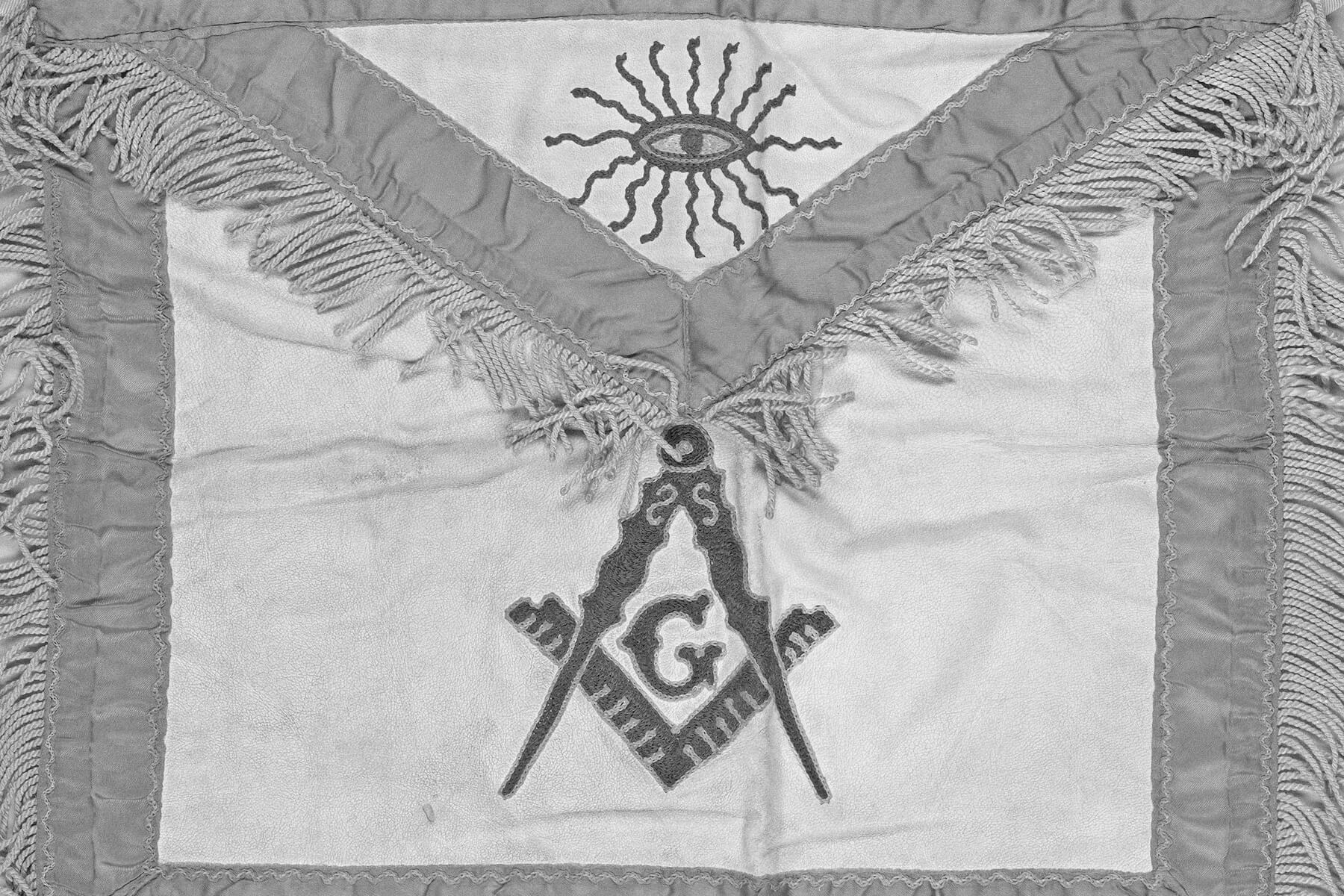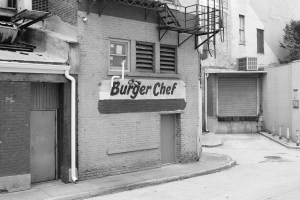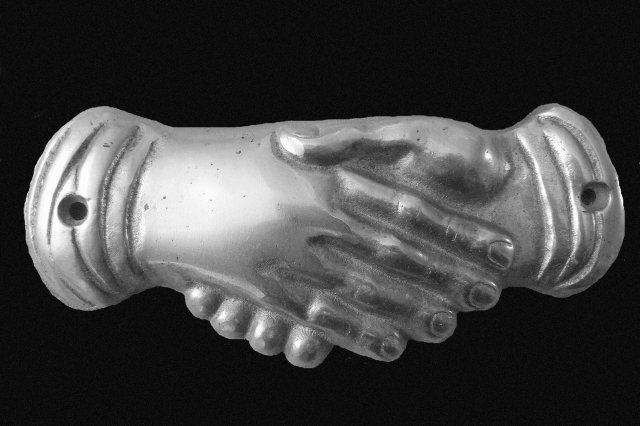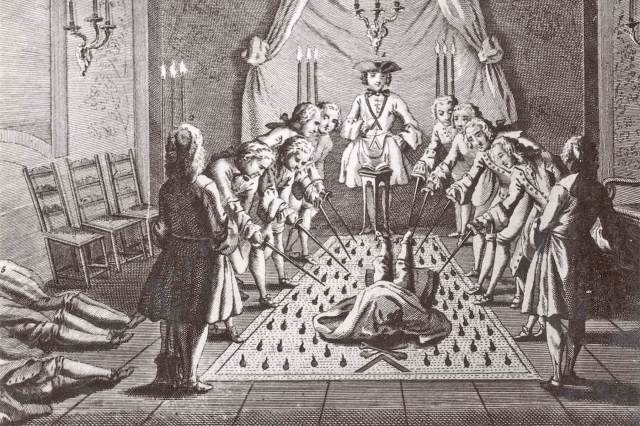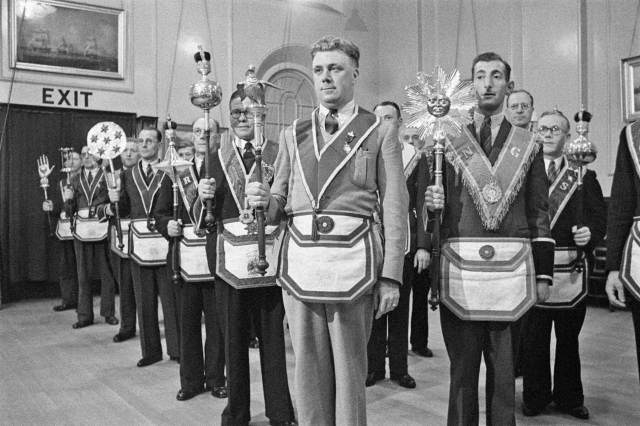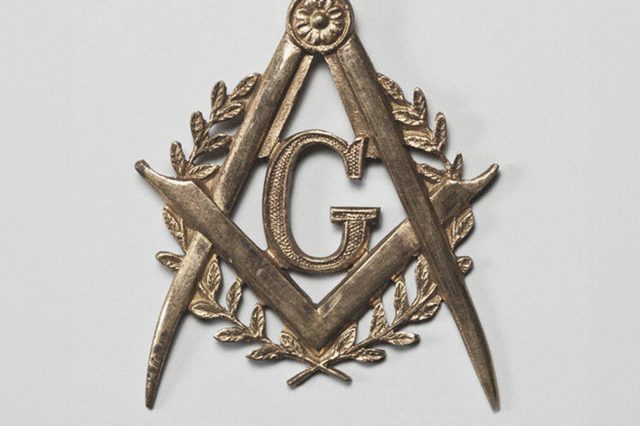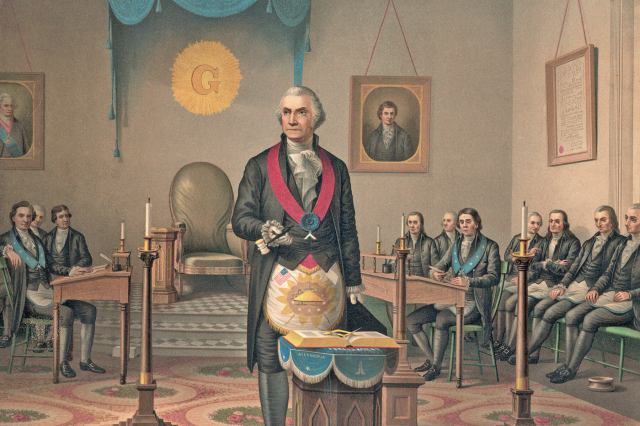6 Secrets of the Freemasons
One of the oldest fraternal organizations in the world, Freemasonry officially dates back to the formation of the first Grand Lodge in England in 1717, although its true beginnings may stretch back hundreds or thousands of years before that point. Formerly an extension of the stonemason guilds in Europe, the organization is now filled with (mostly) men of all faiths, backgrounds, and professions, who gather for the shared love of camaraderie and charitable efforts intended to uplift their communities.
That’s the official party line, at least, but the Freemasons also have a long history of stoking suspicion due to their clandestine ways. While they openly publicize their existence online and even offer tours of their lodges, they also close off access to their ceremonies and retain many of the rituals that have traditionally been shrouded in mystery. As a result, the Freemasons have historically been accused of all manner of nefarious activity, from assassination attempts to satanic worship, and the group has been formally condemned by the Catholic Church.
It can be hard to definitively determine what’s true or overblown when it comes to an organization that keeps a tight lid on its activities. But enough details have leaked out over the years for the nonindoctrinated to get a glimpse at what goes on behind the curtain of this secretive society.
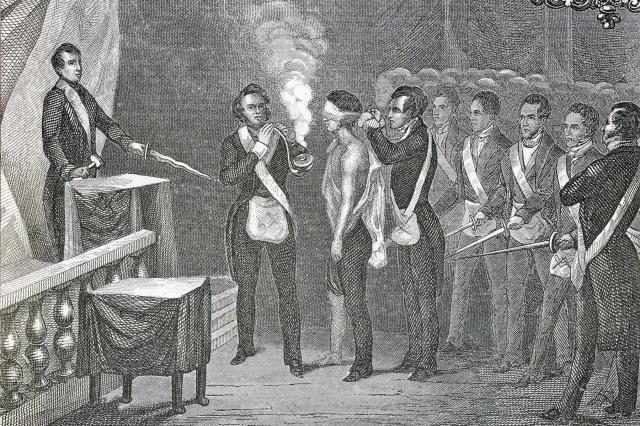
Initiation Ceremonies Can Be Unnerving
Those who are interested in the cloak-and-dagger aspects of Freemasonry are rarely disappointed when learning of the initiation rites for newcomers. According to author Pat Morgan’s The Secrets of the Freemasons, traditionally, a candidate is ordered to roll up a pant leg and open their shirt before being blindfolded and led by a cable tow into a lodge. The candidate then feels a dagger placed to their chest as they’re asked a series of questions, and they’re warned that they’ll have their throat cut if they divulge any secrets of the brotherhood (or sisterhood — female freemasons, who are largely limited to their own groups, undergo similar rites).
As these rituals are solely for candidates for the first degree of Freemasonry, the Entered Apprentice, there are different ceremonies — and warnings — for those awaiting entry to the next two degrees, Fellow Craft and Master Mason. (Beyond these three basic degrees, the total number of degrees differ according to the specific sect of Freemasonry. For example, members of the Scottish Rite can reach a maximum of 33 degrees.) However, Morgan stresses that punishments were never literally carried out and are no longer part of the official oaths.





